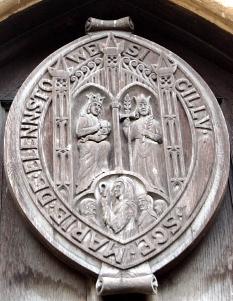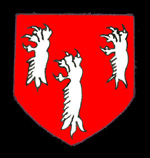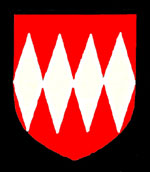The Manor of Wilshamstead

Copy of the Elstow Abbey seal over the west door 2007
Volume III of The Victoria County History for Bedfordshire was published in 1912. It gives detailed histories for each of the manors in Wilshamstead. The Manor of Wilshamstead itself can be traced back to the manor held by Countess Judith, as overlord, in 1086. The nuns of Elstow Abbey held the Manor of Wilshamstead from the countess.

The Newdigate coat of arms
The abbey continued to hold the manor until it was dissolved by King Henry VIII (1509-1547) in 1539. At that time the manor was worth £19/0/5. By 1562 the Crown had granted the manor to Robert Newdigate who sold it in 1563 to John Warner and Thomas Norwood. Warner died childless in 1565 the manor reverting to Norwood, whose family held it until 1608 when it was settled on Edmund Bagshaw and Francis Clerke.

The Mordaunt coat of arms
The manor is next recorded in 1628 when it was received by the Corporation of London, the tenant being Lady Elizabeth Radcliffe. From the corporation it seems to have passed to Henry, Lord Mordaunt and in 1649 two thirds of it was in the ownership of John Manley of Wilshamstead. By 1670 the manor was in the hands of Thomas Beech (owner, amongst other things, of the Red Lion), who settled it on William Bedell.

The Carteret coat of arms
By 1764 the manor was vested in Robert, 3rd Earl Granville, who died childless in 1776. His nephew Henry Frederick Thynne succeeded to the Carteret estates, based in Haynes, but including the Manor of Wilshamstead, changing his name to Carteret in the process. The manor remained with the Carterets until 1849 when John, 3rd Baron Carteret died childless and the barony became extinct.
The manor, however, remained in the possession of the family and was held by A. C. Thynne in 1912. A succession of Law of Property Acts in the 1920s extinguished all manorial incidents, courts and copyhold tenure of land. This effectively abolished manors in all but name.